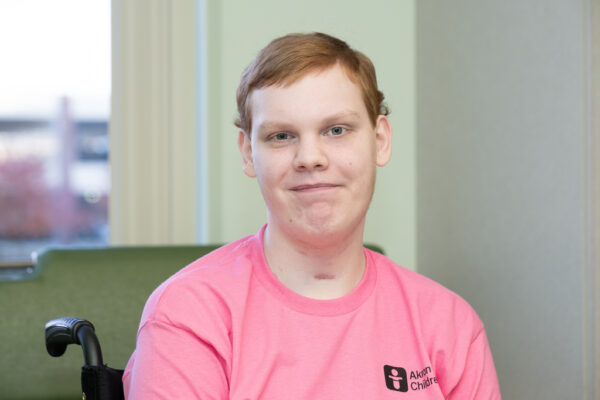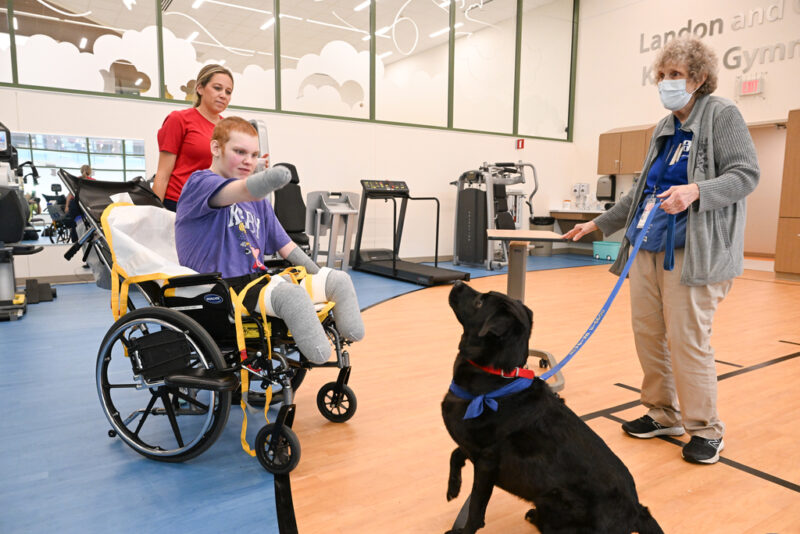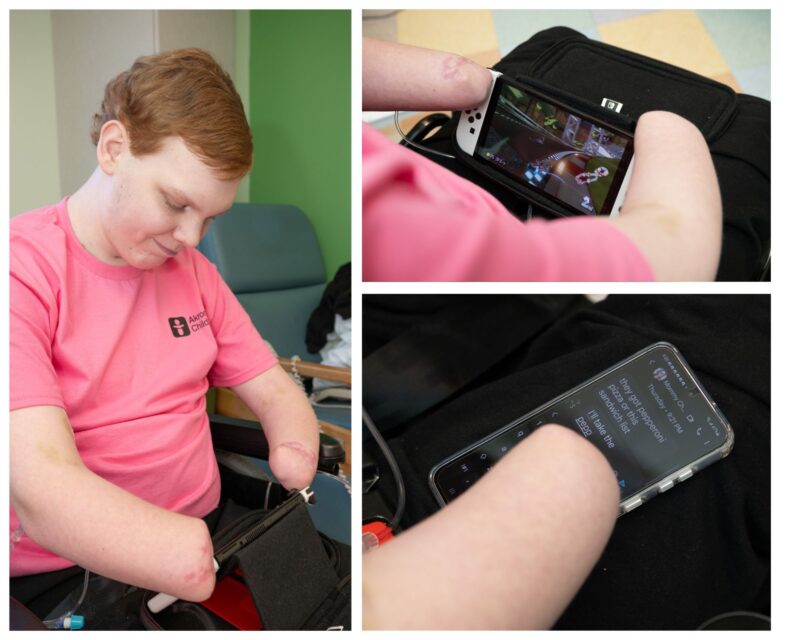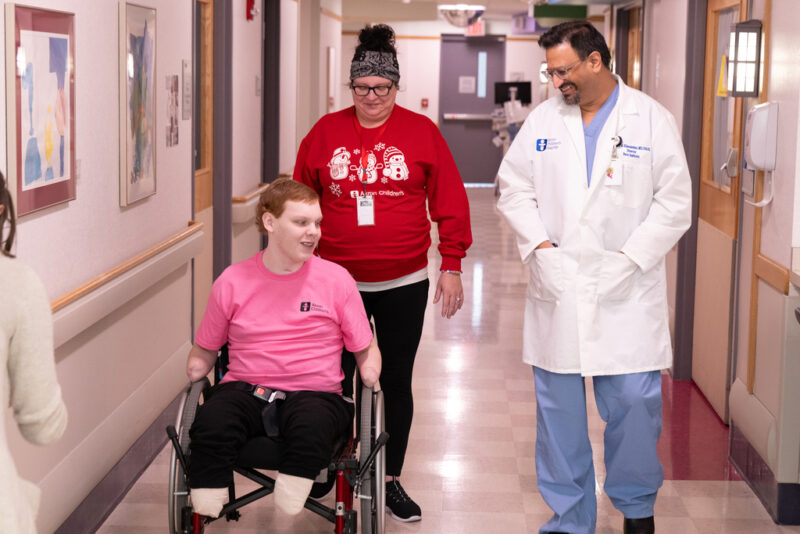
Mason Jones has overcome a lot in his young life, including the loss of both of his hands and feet as a result of a serious infection.
When her 4 kids were under the weather in April 2023, Charde McMillian did what any good mom would do and took them to the doctor.
“They were all diagnosed with strep throat and placed on antibiotics,” she said. “I figured we would go home, and they would get better.”
But that evening 16-year-old Mason developed a fever, rash and purple colored lips. Concerned, Charde called EMS and Mason was transported to an emergency room near their Charleston, W. Va. home. It was quickly determined that Mason had an infection that was causing his organs to fail. Things rapidly got worse and within an hour he was life flighted to a medical center in Roanoke, VA.
“He was immediately placed in a medically induced coma and put on ECMO/life support and dialysis,” said Charde.
After 8 hours, he was life flighted again to the University of Virginia Medical Center where it took a few weeks for the family to get an official diagnosis. Eventually, it was determined that Mason had group A streptococcal toxic shock syndrome which causes sepsis, organ failure and often, death.

During his time in physical therapy, Mason enjoyed working with the therapy dogs.
Mason also developed necrotizing fasciitis, a flesh eating disease that attacks the tissue under the skin. To stop the spread and try to save his life, Mason had to have his hands and feet amputated.
For a kid who likes to play video games, hike, bike, and take photos, Charde and her husband were worried how Mason would react to the news when he woke up.
“In true Mason form he recognized that being negative wasn’t going to fix anything, so he didn’t dwell on it,” said Charde.
With wounds covering 40-50% of his body, Mason had a long road to recovery. It was determined he needed to be in a burn center that specialized in advanced wound care and Akron Children’s Adult and Pediatric Burn Institute (supported by the Paul and Carol David Foundation) was recommended to the family.
“With everything he has been through he deserved the best care in the world and that’s what I wanted to get him,” said Charde.
Dr. Anjay Khandelwal, director of the burn institute, said Mason’s case is one of the most severe he has seen because most people don’t survive.

Although he doesn’t have hands, Mason has learned how to play video games and text.
“Mason’s wounds required daily cleaning and dressing in order to prepare them for skin grafts,” said Dr. Khandelwal.
Since Mason had a soft tissue deficit, Dr. Khandelwal used both donated skin and harvested Mason’s own skin to use in his multiple grafts. He also used spray-on skin which used a piece of Mason’s own skin to create a suspension of spray-on skin cells necessary to regenerate the outer layer of skin.
“The system can prepare enough cells to treat a wound up to 80 times the size of the donor skin sample,” said Dr. Khandelwal. “This would be akin to using a sample the size of a credit card to treat a wound that covers an adult patient’s arm.
“Skin grafting, which is currently the standard of care used to treat many pediatric burns and wounds, is painful, results in an additional wound, can be disfiguring, and may result in additional complications as a child grows,” he added.
With home 4 hours away, Mason’s whole family hunkered down in Akron to be near him. After undergoing extensive physical therapy, Mason was discharged in October with a whole new set of skills.
“He can play video games, text, feed himself and push himself in his wheelchair,” said Charde.
Now a freshman in high school, his next goal is to return to school. He was recently fitted for arm and hand prosthetics and will soon be measured for his legs.

Mason, pictured with his mom and Dr. Khandelwal, gets around by pushing himself in his wheelchair. He hopes to be able to use prosthetics in the future.
“When Mason’s hands and feet were amputated, they saved the nerve bundles so they can be reimplanted into certain muscles and help control the prosthetics,” said Charde.
Mason hopes to have success with myoelectric prosthetics which use motors and batteries to power the movement of the devices that are ultimately controlled by input from electrical signals generated by muscles in the residual limb.
Mason will continue to see Dr. Khandelwal for wound follow up and may be a candidate for laser treatments, which can help improve scarring, down the road if he chooses.
“Akron Children’s is an amazing, wonderful place,” said Charde. “I felt like they cared about my child as much as I do. The staff made us feel loved and supported.
“Mason survived this for a purpose,” she added. “He is out to prove to himself and everyone else that he can still do everything he used to, just in a different way.”










